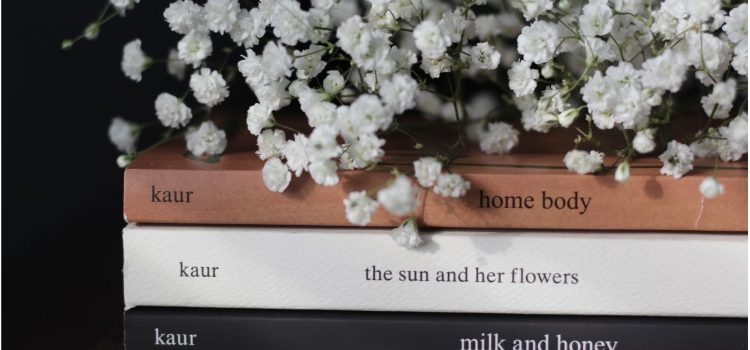

This article is an excerpt from the Shortform book guide to "The Sun and Her Flowers" by Rupi Kaur. Shortform has the world's best summaries and analyses of books you should be reading.
Like this article? Sign up for a free trial here.
Should you read Rupi Kaur’s book, The Sun and Her Flowers? What can you gain from reading her poems? What makes The Sun and Her Flowers so popular?
In Rupi Kaur’s book, The Sun and Her Flowers, her poems shed light on troubling issues both in society and Kaur’s own life. Readers can gain an intimate perspective on the struggles faced by women of color and immigrants.
Read on to learn why it’s worth reading Rupi Kaur’s book, The Sun and Her Flowers.
The Sun and Her Flowers Book by Rupi Kaur
In Rupi Kaur’s book, The Sun and Her Flowers, she uses poetry and visual art to explore her inner emotional self, her relationships, her experiences with trauma and insecurity, and its effect on her relationships. Through her style of minimalist drawings and poems, she connects things in her personal life to larger social issues: Kaur’s relationship with her mother connects to the struggles of immigrants, refugees, and women of color living in misogynistic societies. A new healthy romantic partnership connects to the joy and difficulty of healing and learning self-love.
Why It’s Worth the Read: Life Lessons From Kaur
Readers can gain valuable insight and learn lessons about love and family in Rupi Kaur’s book, The Sun and Her Flowers. Despite the pain and sorrow Kaur felt when her relationship ended, she still chose to avoid her partner, even when he asked for another chance or to remain friends. Her poems describe what a difficult choice this was emotionally, but they also explain the two main reasons why she made the choice to leave and stay away.
Lessons About Unhealthy Relationships
1) Actions speak louder than words: Even though her partner kept telling her things would get better or that they could work through their problems, his behaviors didn’t change. Because of this, Kaur recognized that her partner was still the same and she stopped trusting what he told her.
(Shortform note: Rachel Hollis (Girl, Wash Your Face) also describes how she recognized her relationship was unhealthy—but while Kaur reexamined the actions of her partner, Hollis reexamined herself and realized she’d changed into someone unrecognizable who excused unacceptable behavior or went to excessive lengths to receive approval from her partner. In Hollis’s case, actions still spoke louder than words; the actions were just her own.)
2) Redefining love: Kaur realized that she’d been looking at love in the wrong way. Her desperate search for external sources of love (like other people) went wrong, keeping her stuck in an abusive relationship. Instead, Kaur recognized that she had to learn to love herself—otherwise, she’d follow the same pattern of desperately desiring approval and becoming dependent on a partner. Kaur started redefining love by choosing herself over her partner and staying away from him.
Lessons About Family
In The Sun and Her Flowers, Rupi Kaur expresses newfound gratitude and appreciation in her book, using poetry to discuss her family and culture. She’s come to recognize all of the remarkable challenges her parents faced. Arriving as poor immigrants, Kaur’s parents were able to successfully provide for their family and adapt to their new country and lives. Kaur is grateful to her mother in particular, who gave up pursuing her own goals and dreams so she could raise her family—going through constant work and stress all the while.
In addition to appreciating the positivity of the past, Kaur also looks forward to the future. She expresses her desire to empower and help women around her—particularly women of color and women who have undergone many of the same hardships as her. Kaur phrases this process as carrying on the legacy of the women who came before her, both by recognizing their hardships and by helping future generations of women love and appreciate themselves.
(Shortform note: Some critics of Kaur claim that rather than inspiring young women of color, Kaur is actually holding them back—they say that Kaur speaks over other women of color and overgeneralizes their experiences. These critics often point to an accusation of plagiarism from poet Nayyriah Waheed. In response to these criticisms, Kaur says that both she and Waheed were speaking about similar experiences at similar times, but that she didn’t commit any plagiarism. In addition, she wishes more women of color poets could find the same success that she has.)

———End of Preview———
Like what you just read? Read the rest of the world's best book summary and analysis of Rupi Kaur's "The Sun and Her Flowers" at Shortform.
Here's what you'll find in our full The Sun and Her Flowers summary:
- Explanations and context to better understand Rupi Kaur's poems
- A look into the recurring themes of Kaur's poetry
- What Kaur's poetry can teach us about society and ourselves






